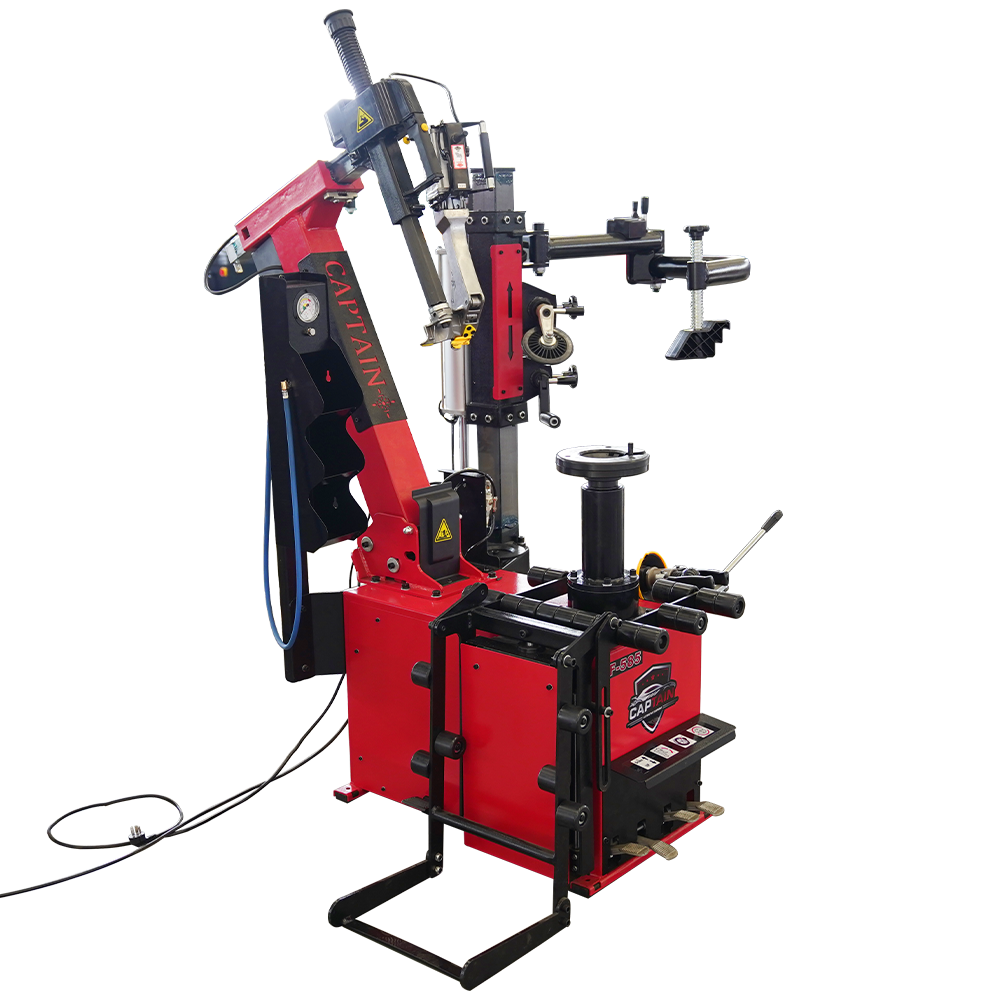Essential Tools for DIY Tire Maintenance
Taking control of your vehicle maintenance can be both rewarding and cost-effective, especially when it comes to tire changes. Manual tire changers have become increasingly popular among DIY enthusiasts who prefer handling their own tire maintenance. These versatile tools not only save money on professional services but also provide the satisfaction of mastering an essential automotive skill.

Understanding Manual Tire Changers
Components and Construction
Manual tire changers consist of several key components designed to safely remove and mount tires on wheel rims. The main base provides stability during operation, while the center post supports the wheel assembly. Most manual tire changers feature mounting bars, bead breakers, and various accessories that work together to facilitate smooth tire changes. Quality models typically use heavy-duty steel construction to ensure durability and long-term reliability.
Benefits of Manual Operation
While automatic tire changing machines dominate professional shops, manual tire changers offer distinct advantages for home mechanics. They require no electricity, making them perfectly suited for garage use or mobile repairs. The manual operation also provides better control and feel during the tire changing process, reducing the risk of damaging expensive wheels. Additionally, these tools are significantly more affordable than their powered counterparts, making them an attractive option for DIY enthusiasts.
Top Manual Tire Changers in the Market
Heavy-Duty Models
Premium manual tire changers often feature reinforced construction and enhanced weight capacity, capable of handling larger wheels and tires. These models typically include adjustable mounting heads, making them versatile enough to work with various tire sizes. Heavy-duty units generally come with extended warranties and better quality materials, justifying their higher price point for serious DIY enthusiasts.
Portable Solutions
Compact manual tire changers have gained popularity among users with limited space or those needing mobility. These models often feature collapsible designs or modular construction for easy storage and transport. While they may have lower weight capacities than their larger counterparts, portable tire changers excel in convenience and versatility for basic tire maintenance tasks.
Key Features to Consider
Build Quality and Materials
When selecting manual tire changers, build quality should be a primary consideration. Look for models constructed with high-grade steel and protective coatings to prevent rust and wear. The mounting mechanisms should operate smoothly and precisely, while the base must provide adequate stability during use. Quality materials not only ensure safety but also contribute to the tool's longevity.
Compatibility and Adjustability
Different vehicles require different tire sizes, making adjustability a crucial feature in manual tire changers. The best models offer multiple mounting positions and adjustable components to accommodate various wheel diameters and widths. Consider the range of tire sizes you'll be working with and ensure your chosen model can handle them effectively.
Safety and Operation Guidelines
Proper Setup Procedures
Safe operation begins with correct setup of the manual tire changer. Ensure the unit is mounted on a level, stable surface and all components are properly secured. Regular maintenance, including lubrication of moving parts and inspection of wear items, helps prevent accidents and ensures smooth operation. Always follow the manufacturer's guidelines for maximum tire sizes and weight capacities.
Technique and Best Practices
Successful tire changing requires proper technique and attention to detail. Start by thoroughly lubricating the tire beads and rim surfaces to reduce friction and prevent damage. Use appropriate tools for bead breaking and mounting, avoiding excessive force that could harm the tire or wheel. Practice on older tires first to develop the necessary skills before working on valuable wheels.
Maintenance and Care
Regular Inspection Routines
To ensure lasting performance from manual tire changers, establish regular inspection routines. Check all mounting points, moving parts, and wear surfaces for signs of damage or deterioration. Keep mounting heads clean and free of debris that could scratch wheels or damage tire beads. Address any loose components or wear issues promptly to maintain safe operation.
Storage and Protection
Proper storage helps preserve manual tire changers and their components. When not in use, store the unit in a dry location away from extreme temperatures and weather exposure. Consider using protective covers for exposed metal surfaces, and keep mounting tools organized and protected from damage. Regular cleaning and rust prevention measures will extend the tool's service life.
Frequently Asked Questions
How long does it take to change a tire with a manual tire changer?
With practice and proper technique, most users can complete a tire change in 20-30 minutes. The exact time depends on tire size, wheel type, and operator experience level. Beginners should expect longer completion times while developing their skills.
Can manual tire changers work with low-profile tires?
While manual tire changers can handle low-profile tires, extra care and specific techniques are required. Look for models with specialized mounting heads and enhanced features designed for low-profile applications. Professional assistance may be recommended for extremely low-profile or run-flat tires.
What maintenance do manual tire changers require?
Regular maintenance includes cleaning, lubrication of moving parts, and inspection of wear components. Check mounting heads and bead breakers for damage, tighten any loose bolts, and protect metal surfaces from rust. Most units require minimal maintenance when properly cared for and operated within their specifications.

